Shizuoka is most known for Japan’s National Treasure and World Heritage, Mt. Fuji. But there’s so much more to explore in the prefecture. Other Shizuoka attractions include Shimizu Port, Atami, Sunpu Castle, and more. Shizuoka is also the land of green tea, one of the biggest producers in Japan.
Table of Contents
- The Story of Shizuoka
- Top Attractions in Shizuoka
- Historical Shrines in Shizuoka
- Famous Delicacies in Shizuoka
- Access to Shizuoka Station from Tokyo
- Summary
The Story of Shizuoka

Japan’s most iconic landmark, Mt. Fuji, lies here in Shizuoka Prefecture. In this article, we explore other things Shizuoka has to offer.
History
Shizuoka Prefecture was formed when the old provinces of Tōtōmi, Suruga, and Izu were merged into one prefecture during the late 19th century. Both Suruga and Izu provinces were under the control of the Hojo Clan in the Middle Ages of Japan, while the Tōtōmi Province was under the Imagawa Clan during the Sengoku Period. Within its center lies the Sunpu Domain, which the Imagawa Clan controlled during the Muromachi Period.
Before the prefecture’s capital Shizuoka came into existence, it was called Sumpu. This place saw the early years and late life of Tokugawa Ieyasu, one of Japan’s great unifiers. In the Sunpu Domain, the Imagawa Clan raised Ieyasu as a young boy. Ieyasu later came back to control the Sunpu Domain as an Ogosho (a retired shogun) in 1607 where he continued to direct the Shogunate until his death. At the beginning of the Meiji Restoration, Sunpu Domain officially became Shizuoka Domain and eventually formed Shizuoka Prefecture.
※Official Shizuoka City Tourism Website, “The city that nurtured Tokugawa Ieyasu, the city that he built.”
Geography
Shizuoka Prefecture is bordered by three others; Aichi in the west, Yamanashi in the northeast, and Kanagawa in the northwest. Its whole southern and western side faces the sea stretching across Enshu Sea, Sagami Sea, and their bays.
The prefecture is blessed with nature’s beauty, consisting of mountains, lakes, and beaches. Rivers also run through the entire prefecture, leading from the mountains to the seas.
※ Shizuoka Guide, “About Shizuoka Prefecture: Overview” ※ Shizuoka Prefecture
Economy
Shizuoka is involved in many industries including agriculture, automobile, and fisheries. The biggest contributors to Shizuoka’s economy are green tea and industrial. Indeed, Shizuoka’s production of green tea accounts for 40% of production in Japan, so make sure to get some as a souvenir.
※ Shizuoka Prefecture, "Shizuoka Green Tea"
Writer's Pick
Top Attractions in Shizuoka
Intrigued at what Shizuoka has to offer? Here are some of Shizuoka’s best attractions.
MOA Museum of Art in Atami

Atami is a small but popular hot spring retreat for those looking to getaway from Kanagawa and Tokyo. Make sure to try some delicious seafood too as Atami is a fishing town which means the freshest catch.
Another one of Atami’s top attractions is the MOA Museum of Art. It is a private museum established by the Mokichi Okada Association originally built to house their founder’s vast art collection. The museum’s collection includes National Treasures such as the “Red & White Plum Blossoms” screen painting and Wisteria Tea-Leaf Jar, sculptures, artifacts, calligraphy, paintings, and more.
For a break, have a meal or sip on tea at the museum’s cafe, teahouse, or restaurant. Events and exhibitions are regularly held, check the ongoing events on their webpage. From Noh theatre to violin concerts, there’s plenty to experience here.
Access: Quite a distance (32-mins walk) from the nearest station. Recommended to drive (free parking available) or take a taxi (8-mins) from Atami Station.
Entrance Fee: 1,600 yen (Adult)
※ MOA Museum of Art ※ MOA Museum of Art, “Plan A Visit”
Mishima Skywalk in Mishima
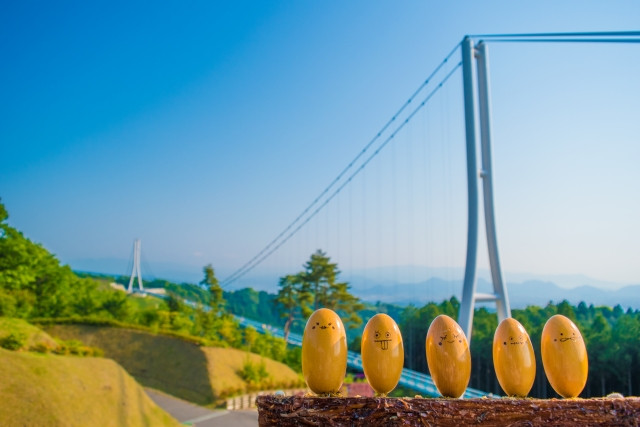
Mishima Skywalk Park is a land of adventure and panoramic views. The park’s facilities include:
-
Sky Garden - An open air shopping area with gift shops and food stalls. Enjoy a break in this beautiful place decorated with seasonal flowers hanging down from the ceiling.
-
Picnic Cafe - Fancy a picnic? Your meal is packed in a cute basket. Venture out to the forest and find a cosy spot to dine!
-
Dog Run - Pamper your pooch at this area made for you to enjoy time with your special fluffy friend! Dine and take commemorative photos together! There’s even a no-leash area where all the dogs can socialize!
-
Flock ~Fuku Clock~ - Meet fluffy, feathery friends. Pet, cuddle, and take photos with owls, hedgehogs, meerkats, cats, and more.
-
Forest Adventure - From ziplining to segway riding, there’s lots of fun to be had for both adults and children alike.
For a panoramic view of Mt. Fuji and Suruga Bay, venture across the 400-meter long suspension bridge. Visit in the evening during October to February to catch the early sunset bathe the area in a glow of orange and red. Expect to spend a full day here to enjoy all the park has to offer.
Access: At Mishima Station, make your way to the South Exit Bus Stop No.5 and take a bus to Mishima Skywalk Bus Station.
Entrance Fee: 1,100 yen (Adult), usage of facilities separately charged
※ Mishima Skywalk ※ Mishima Skywalk, “English Pamphlet”
Shimizu Port in Shizuoka
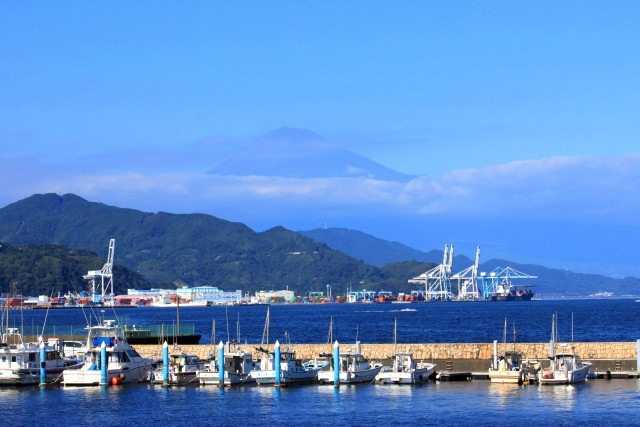
Shimizu Port has a long history in Japan with records indicating its existence as far back as during the Nara Period. Since the 1900s, Shimizu Port has been vital to Japan’s economy as it handles large shipments of exports, especially Shizuoka green tea. Places to explore here include shopping mall S-Pulse Dream Plaza, Verkehr Museum, fish markets, and more.
For some nearby areas to visit, try Mino Matsubara (20-mins by car), Shizuoka City Tokaido Hiroshige Museum of Art (25-mins by car), and Nihondaira (25-mins by car).
※ Shimizu Port ※ MLIT, “Shimizu Port Tourist Information”
Tokaikan in Ito
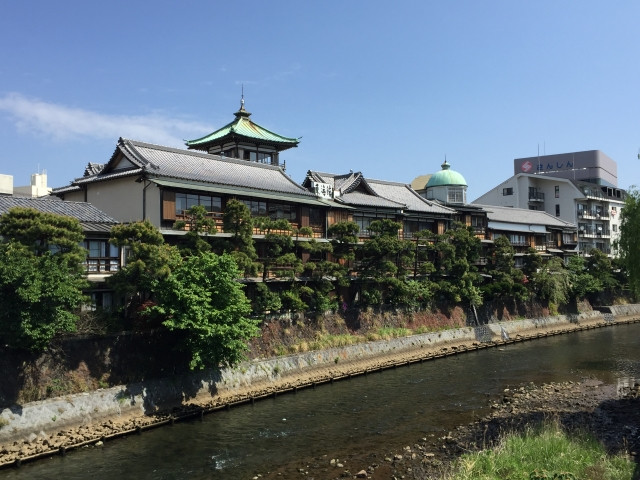
The town of Ito is another popular hot spring town located in Shizuoka’s Izu Peninsula. Journey to Ito, Atami, and Beppu to complete the circuit of Japan’s biggest onsen towns. Whilst you’re here to enjoy a nice hot soak, take the opportunity to explore the historical side of the city with former onsen ryokan Tokaikan.
Established in the 3rd Year of Showa (1928), Tokaikan is one of the last remaining wooden built onsen ryokan from its time period. The ryokan is no longer in operation, its current purpose being a museum allowing visitors the opportunity to admire its wooden frame and carvings, learn its history, and have tea in a traditional tearoom. During weekends only, visitors have the opportunity to try the baths. There are 2 baths available that are swapped regularly for both gentlemen and ladies to enjoy.
Access: 7-mins walk from JR Ito Station
Entrance Fee: 200 yen (Adult)
Bathing Fee: 500 yen (Adult)
NOTE BATH TIMES FOR EACH GENDER
Men: 11:00 ~ 12:45 (Large Bath), 17:00 ~ 19:00 (Small Bath)
Women: 15:00 ~ 16:45 (Large Bath), 13:00 ~ 14:45 (Small Bath)
※ Izu・Ito Tourism Guide, “Ito Hot Springs” “Tokaikan” “Tokaikan Baths”
Sumpu Castle in Shizuoka
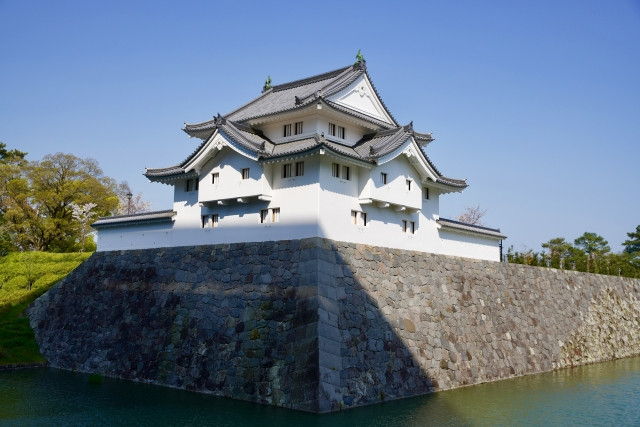
Next up, we have the legendary Sumpu Castle where Tokugawa Ieyasu grew up and returned to live out his retirement. Once the center of the Sumpu Domain, the castle is now a popular spot amongst tourists and locals alike for cherry blossom and azalea viewing. For an additional sum of 150 yen, you can visit Momijiyama Garden that boasts a beautiful pond so clear it reflects perfect images of the surrounding trees and rocks. You can also enjoy a break at the tea hut overlooking the garden. With “Momiji” included in its name, expect the autumn foliage to be a breathtaking sight.
Access:
-
7-mins walk from Shizuoka Aoi Ward Office Bus Station
-
10-mins walk from Shin-Shizuoka Bus Station
-
20-mins walk from Shizuoka Station
Entrance Fee: 360 yen (Adult)
Other Entrance Fees (Adult):
-
Higashi Gomon & Tatsumi Yagura: 200 yen
-
Hitsujisaru Yagura: 100 yen
-
Momijiyama Garden: 150 yen
※ Sumpu Castle Park
Iwamotoyama Park in Fuji

Next up, we have the scenic Iwamotoyama Park that boasts scenic beauties of Mt. Iwamoto, Mt. Fuji, Fuji River, Suruga Bay, and the Southern Alps. That’s a lot to see in this 13.2 hectares large park. The park is a hotspot for flower viewing, especially sakura in early spring (March ~ April) and plum blossoms in late winter to early spring (January ~ March).
Access: Best accessed by car, several parking lots around the park. Nearest station Tomei Matsuoka is about 39-mins walk away.
※ Fuji City, “Iwamotoyama Park” ※ Shizuoka Guide, “Iwamotoyama Park”
Mt. Fuji of Fujinomiya
Last but not least, we have Mt. Fuji, the icon of Japan.
For more about Mt. Fuji, check out our articles.
Historical Shrines in Shizuoka
Looking to check out some of the most popular shrines in Shizuoka? We’ve got you covered.
Mishima Taisha in Mishima
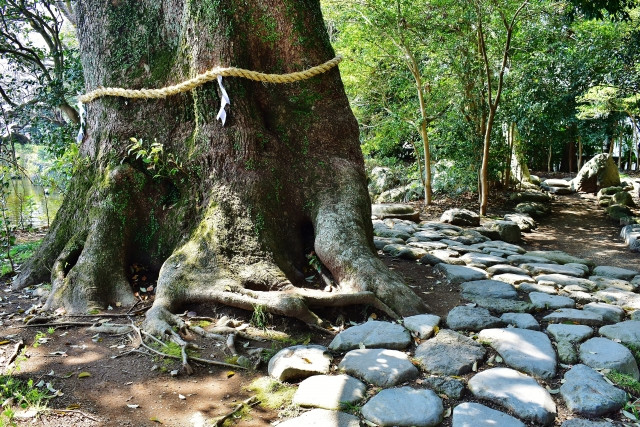
Mishima Taisha is the Ichinomiya (一宮), a term given to the highest ranking shrine, of its area. It enshrines the collective deity called Mishima Daimyojin which consists of Ooyamatsumi no Mikoto and Tsumihayae Kotoshironushi no Kami who are also known as Ebisu-sama, gods of fortune. Aside from its beautiful pavilions, the shrine has a deer park, a treasure museum holding priceless artifacts, traditional gardens, and unique events like yabusame (horseback archery).
Access:
-
Mishima Taisha-mae Bus Station
-
7-mins walk from Mishima-Tamachi Station
-
15-mins walk from JR Mishima Station
-
25-mins from Mishima Skywalk
-
From Mishima Skywalk Bus Station, take a bus heading towards Mishima Station. Get off at Mishima Taisha-mae Bus Station.
-
※ Mishima Taisha
Okuni Jinja in Mori
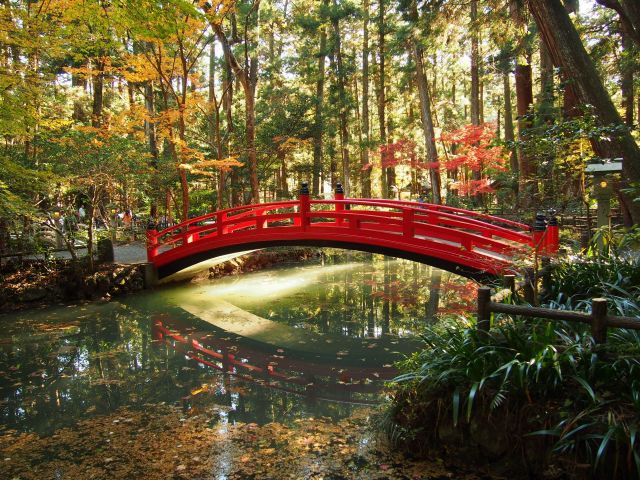
Until the Edo Period's end, Okuni Jinja was the Ichinomiya of Totomi province. Carefully preserved for centuries since its establishment in the year 555, Okuni Jinja has even received the Tokugawa clan’s support. The deity enshrined here is Okuninushi no Mikoto who gives blessings of prosperity, protection from evil, marital harmony, and marriage. The best time to visit the shrine is during:
-
Early April for Sakura
-
Early June for Irises
-
Late November for Autumn Foliage
Access: Courtesy Minibus from Totomi-Ichinomiya Station, check here for bus schedule.
※ Okuni Jinja
Izusan Jinja in Atami
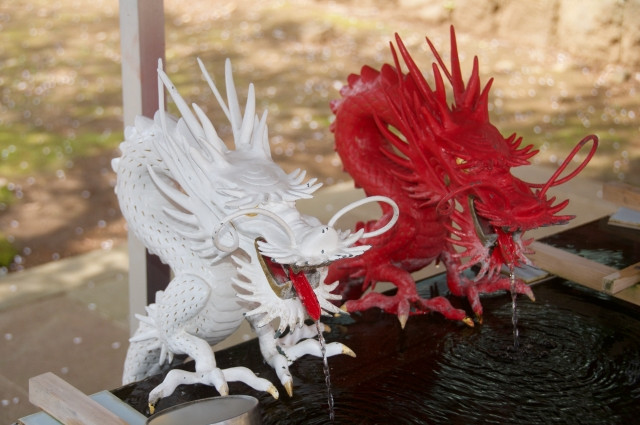
The namesake of Izu Peninsula, Izusan Jinjya’s symbols are a red fire dragon and a white water dragon. As legend has it, the combination of the dragon's powers brings forth the hot water that is the source of hot springs in the area. Below the shrine is where the dragons reside and carry out their duties as guardians of the onsen. The shrine is also the site where Minamoto no Yoritomo and his wife Hojo Masoka first met and later wedded. Praying at this shrine will give one blessing in good fortune, career prosperity and marital harmony. Known as the temple of marriage, Izusan Jinja is frequented by couples and those looking for love.
Access:
-
Izusan Jinja-mae Bus Stop
-
20-mins walk from MOA Museum of Art
-
15-mins from Atami Station
-
From Atami Station, 5-mins walk to Kasugacho Bus Station. Take a bus to Izusan Jinja-mae Bus Stop.
-
※ Izusan Jinja
Shizuoka Sengen Jinja in Shizuoka
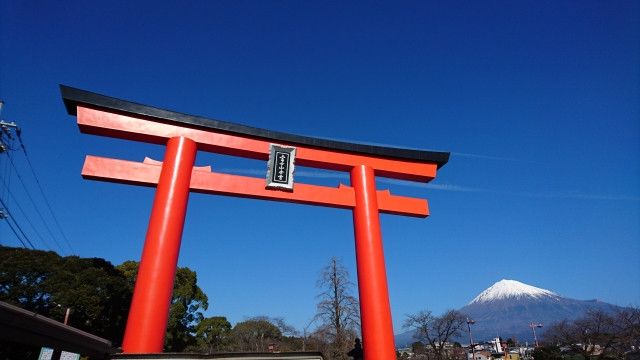
Shizuoka Sengen Shrine is the collective name for three Shinto shrines, namely Kanbe Jinja, Asama Jinja, and Otoshimioya Jinja. Kanbe Jinja and Asama Jinja is a combined complex with Kanbe taking up the right side and Asama the left. 26 of the entire shrine complex’s buildings are nationally designated important cultural properties. Tokugawa Ieyasu’s life is also deeply rooted in the shrine’s history, to find out more read here.
Access: Asama Jinja or Akatorii Asama Jinja Iriguchi Bus Stations
※ Shizuoka Sengen Jinja
Kunozan Toshogu in Shizuoka
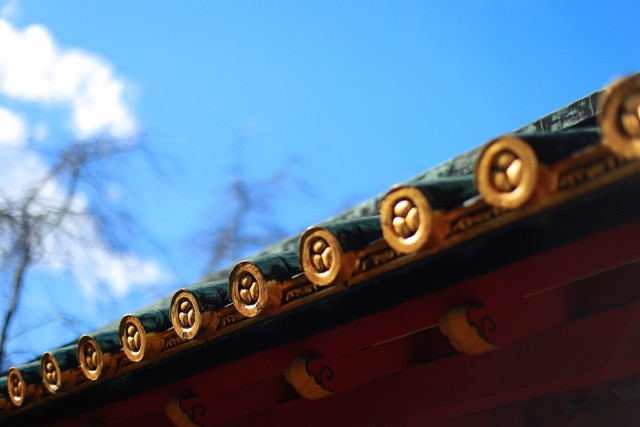
Before passing away, Tokugawa Ieyasu gave the order for himself to be buried upon Kunozan. His successor did so and instructed the building of Kunozan Toshogu to enshrine him. Alongside Tokugawa Ieyasu, the shrine enshrines Oda Nobunaga and Toyotomi Hideyoshi. The shrine’s biggest festival, Goreisai, is celebrated on April 17th (the day of Tokugawa Ieyasu’s passing) every year. On this solemn day, all manner of delicacies are brought over as offerings to the shrine’s three deities.
Interested in Japanese history? Visit the Kunozan Toshogu Museum whose collection holds more than 2000 artifacts from the Edo Period. This includes personal items that belonged to Tokugawa Ieyasu including his sword and armor.
Access: Only by Nihondaira Ropeway or on foot (20-mins from foot of Mt. Kuno).
Entrance Fee: 500 yen (Adult)
Museum Fee: 400 yen (Adult)
Nihondaira Ropeway Fee: 1,250 yen (Adult) for roundtrip
TIP
-
Save 200 yen by getting a combo ticket for 1,950 yen (Adult) that includes roundtrip ropeway ticket, shrine entrance fee, and museum fee.
-
Not taking the ropeway? Save 100 yen by getting combo admission for 800 yen that includes shrine entrance and museum fee.
※ Kunozan Toshogu Shrine ※ Nihondaira Ropeway
Famous Delicacies in Shizuoka
Try Shizuoka’s green tea, seafood and other delicacies. Here are some places you can dine at for the best of Shizuoka:
-
Omiya Yokocho Food Court for Yakisoba
-
Nanaya for Matcha Gelato
-
Aoba Oden Street for Shizuoka-style Oden
-
Kurasawaya for Shizuoka’s famous Sakura Shrimp
and more!
Access to Shizuoka Station from Tokyo
The fastest way to get to Shizuoka from Tokyo is via Tokaido Shinkansen from Tokyo or Shinagawa Station. Hikari can complete the trip in 1 hour whilst Kodama can do it in 1.5 hours. The price ranges around 6,000 yen. Note that Hikari is not covered by the Japan Rail Pass.
For more Shinkansen articles, check here.
Trip Across Japan with Tokaido Shinkansen
Japan Bullet Train: An Adventure in just a snap!
Alternative ways to get to Shizuoka are via long distance bus and regular train lines. These methods are cheaper at a price range of around 3,000 yen but will take around 3 hours. .
Summary
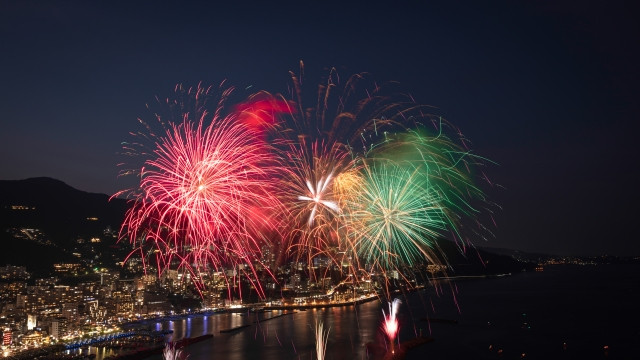
Shizuoka Prefecture is a great holiday destination if you’re looking to travel from Tokyo, Yamanashi, or Kanagawa. Whether it’s a relaxing onsen vacation in Atami and Ito, or a historical tour of Sunpu Castle and Kunozan Toshogu, Shizuoka has it all. Not to mention you can stay refreshed with one of the best green teas in Japan. Have some respite in Shizuoka before venturing on to the challenge that is Mt. Fuji.









.jpg)





.png)














